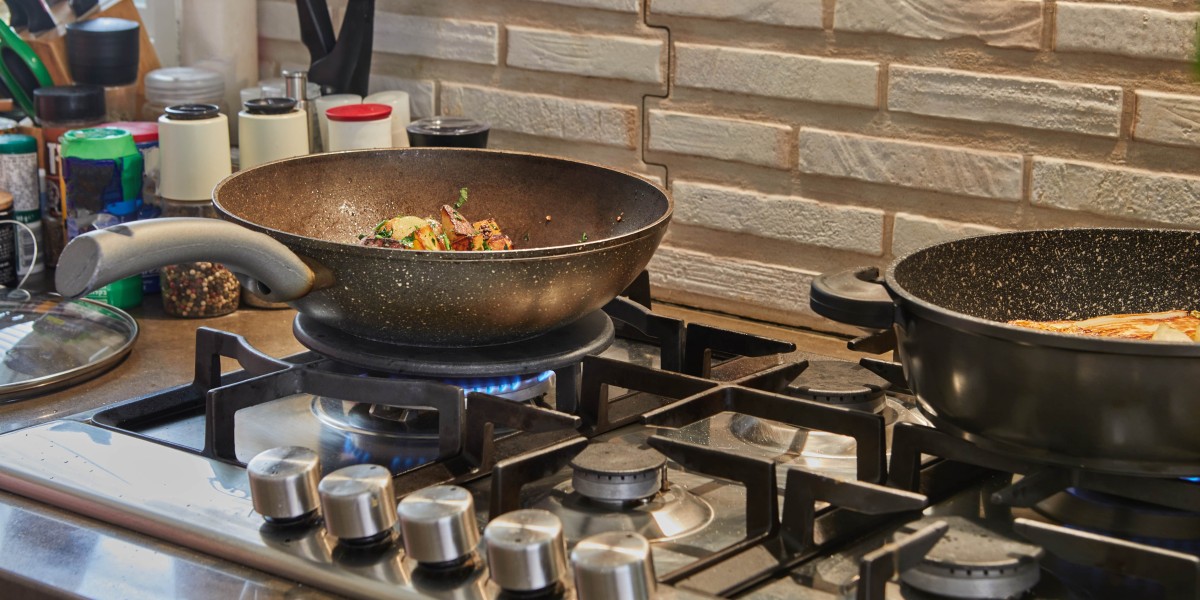The Integrated Kitchen: A Harmonious Blend of Functionality and Aesthetics
In today's busy world, the kitchen has evolved from a mere cooking area to a multifunctional hub that balances with the general circulation of the home. The integrated kitchen principle is at the leading edge of this change, combining aesthetic appeals with performance. This post digs into the concepts of integrated cooking areas, their advantages, and important design elements, ensuring you comprehend what makes this modern kitchen layout so appealing.
What Is an Integrated Kitchen?
An integrated kitchen is designed to perfectly mix with the other living spaces in a home, shunning the traditional separation of the kitchen from the living and dining locations. This approach stresses open layout, efficient use of space, and cohesive style to create a unified appearance.

Secret Features of an Integrated Kitchen
Open Layout: The considerable feature of an integrated kitchen is its openness. Walls in built oven between the kitchen, dining, and living areas are often eliminated to produce a free-flowing space.
Unified Design Aesthetics: The style of an integrated kitchen often reflects the design of the adjoining areas. Cabinets can match the living room furnishings, and color design can be coordinated for an unified appearance.
Functional Zones: While it is open, an integrated kitchen still preserves functional zones-- cooking, preparing, and dining-- to make sure functionality.
Smart Storage Solutions: Integrated kitchens utilize creative storage choices like pull-out cabinets, hidden appliances, and built in cookers Bosch Stainless Steel Built-In Electric Oven (click to investigate)-in shelving to keep clutter at bay.
Multi-Use Furniture: Island counter tops, for instance, are not just for prep work but can work as dining surfaces or communal spaces.
Advantages of an Integrated Kitchen
The integration of kitchen areas brings forth numerous benefits:
| Benefit | Description |
|---|---|
| Area Optimization | Takes full advantage of making use of available area, specifically in smaller sized homes. |
| Enhanced Social Interaction | Fosters interaction and interaction amongst relative while cooking, dining, or amusing. |
| Increased Natural Light | An open layout permits better light distribution, making the area feel larger and brighter. |
| Visual Appeal | Develops a more aesthetically appealing living location with a cohesive design. |
| Increased Home Value | Modern, trendy integrated cooking areas can significantly enhance a residential or commercial property's market price. |
Style Elements to Consider
For house owners wanting to produce an integrated kitchen, a number of aspects must be carefully thought about:
Color Scheme: Choose a color palette that flows throughout the home. Neutral colors are flexible and tend to mix well.
Flooring: Use consistent flooring product. Flow from the kitchen to the living-room can be boosted by matching tiles or wood.
Lighting: Incorporate layered lighting, including ambient, job, and accent lighting to enhance functionality and visual appeals.
Appliances: Select Beko 99L Built-In Double Oven - Stainless Steel or panel-ready appliances to keep a smooth appearance.
Island or Peninsula: Consider installing an island or peninsula that can serve numerous functions-- cooking, dining, and mingling.
Sustainable Practices in Integrated Kitchens
As sustainability ends up being a growing concern, incorporating environmentally friendly practices into kitchen style can be helpful. Here are some pointers:
- Energy-Efficient Appliances: Invest in ENERGY STAR-rated appliances to reduce energy consumption.
- Sustainable Materials: Opt for cabinets made from reclaimed wood or bamboo, both environmentally friendly and elegant.
- Low-Flow Fixtures: Use water-saving faucets and fixtures to promote water conservation.
- Recycling Stations: Designate spaces for recycling and composting to motivate sustainable living.
Frequently Asked Questions About Integrated Kitchens
What is the typical expense of an integrated kitchen?
The expense of an integrated kitchen varies extensively, depending upon size, materials, and complexity. Typically, house owners can anticipate to invest between ₤ 20,000 and ₤ 50,000.
How do I make sure appropriate ventilation in an integrated kitchen?
Correct ventilation can be attained through effective range hoods, windows, and the tactical placement of exhaust fans to remove cooking odors effectively without disrupting the open flow of space.
Can integrated kitchens work in small homes?
Absolutely. Integrated cooking areas can make little areas feel larger and more inviting by breaking down walls and permitting flexible designs.
What design style matches an integrated kitchen best?
Integrated cooking areas can suit a variety of styles, consisting of modern-day, contemporary, and rustic designs. The secret is to preserve a cohesive aesthetic throughout the open space.
Are integrated cooking areas more expensive than conventional kitchen areas?
The general expense depends upon different elements, consisting of design options and materials utilized. Often, integrated designs can be achieved within a comparable spending plan, specifically when considering the worth they include to a home.
An integrated kitchen exemplifies the evolution of living areas in modern homes, combining visual appeals with functionality. By enabling open designs, cultivating social interaction, and using clever storage, these kitchens offer a preferable environment for cooking, entertaining, and family bonding. As more house owners acknowledge the numerous benefits of an integrated kitchen, this style trend is most likely to continue growing in appeal, reshaping the way we think of our most vital area.








